
Marketing
Why are reviews important for your retail store?
Reviews guide customers as they make choices, foster trust, and can even give sales a significant lift. If your clothing...
Converting FAQ Page Examples: How to build trust with your customers?
Business Kick-Starter Guides
+1
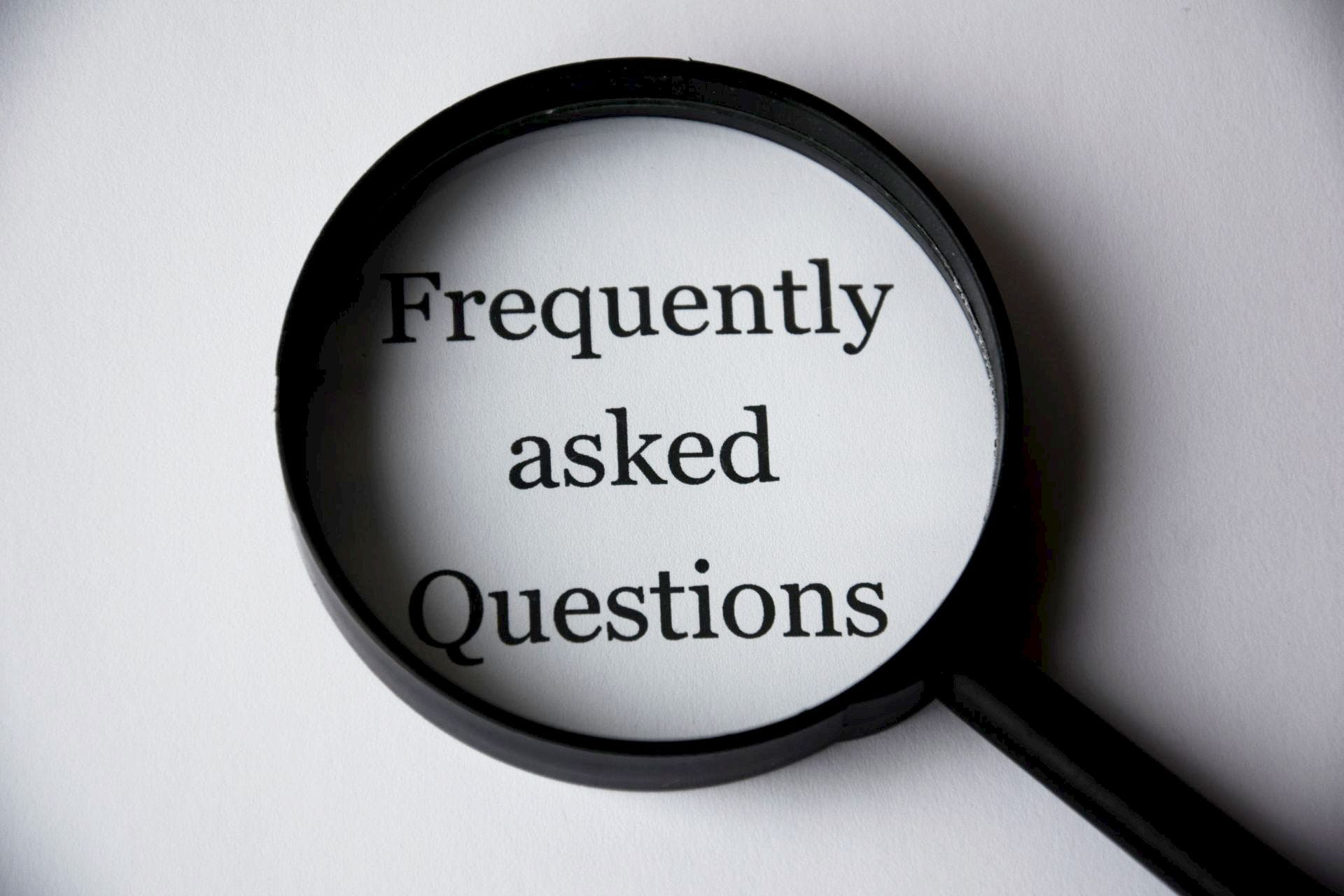
For dropshipping clothing stores, FAQ pages are especially important. They help bridge the gap between your business and customers by providing information that can resolve their concerns without having to contact customer support.
A study reports that close to 70% of customers would rather find an answer to their questions on their own by relying on the website’s resources - such as an FAQ section.
That being said, today, we'll look at some great FAQ page examples from different clothing stores to show you how these businesses have excelled in providing self-service to customers, and with that, have built trust with their audience.
An FAQ page, short for Frequently Asked Questions, is a dedicated section on a website that addresses common inquiries associated with a business’s products or services.
These can range from product specifics, payment gateways, and shipping policies to after-sales service details and more.
Creating an FAQ page for your dropshipping clothing store comes with multiple advantages that can significantly enhance your customers’ shopping experience and your store’s online visibility.
Here’s why an FAQ page is an essential feature for any dropshipping fashion store:
Check out: How to create ‘About Us’ page?
Creating an effective FAQ page is quite an easy process which will break down into only 5 steps:
Start by gathering the most frequent questions and concerns from your customers. This task can be achieved by analyzing customer support inquiries, social media comments, reviews, or any other medium where customers express their opinions.
After identifying the common questions, systematically organize them. Consider grouping similar questions together or categorizing them into different sections like ‘Shipping’, ‘Payment’, ‘Returns & Refunds’, etc., which allows users to find the information they seek effortlessly.
Each answer should be clear, concise, and straightforward while providing all the necessary details to fully address the query. Be careful to avoid jargon or technical language. Instead, aim for simplicity and clarity in your answers.
A well-designed FAQ page should be intuitive, visually appealing, and easy to navigate. Consider the following elements:
Lastly, keep your FAQ page up-to-date by regularly reviewing and updating it as per your business changes and new queries arise. An outdated FAQ page can lead to confusion among customers and may even drive potential customers away.
Check out: Best ‘Contact Us’ page examples
Here are essential questions that customers frequently seek answers to:
Check out: Questions to ask your dropshipping supplier
Farfetch has an FAQ page that reflects the store’s commitment to customer service excellence.
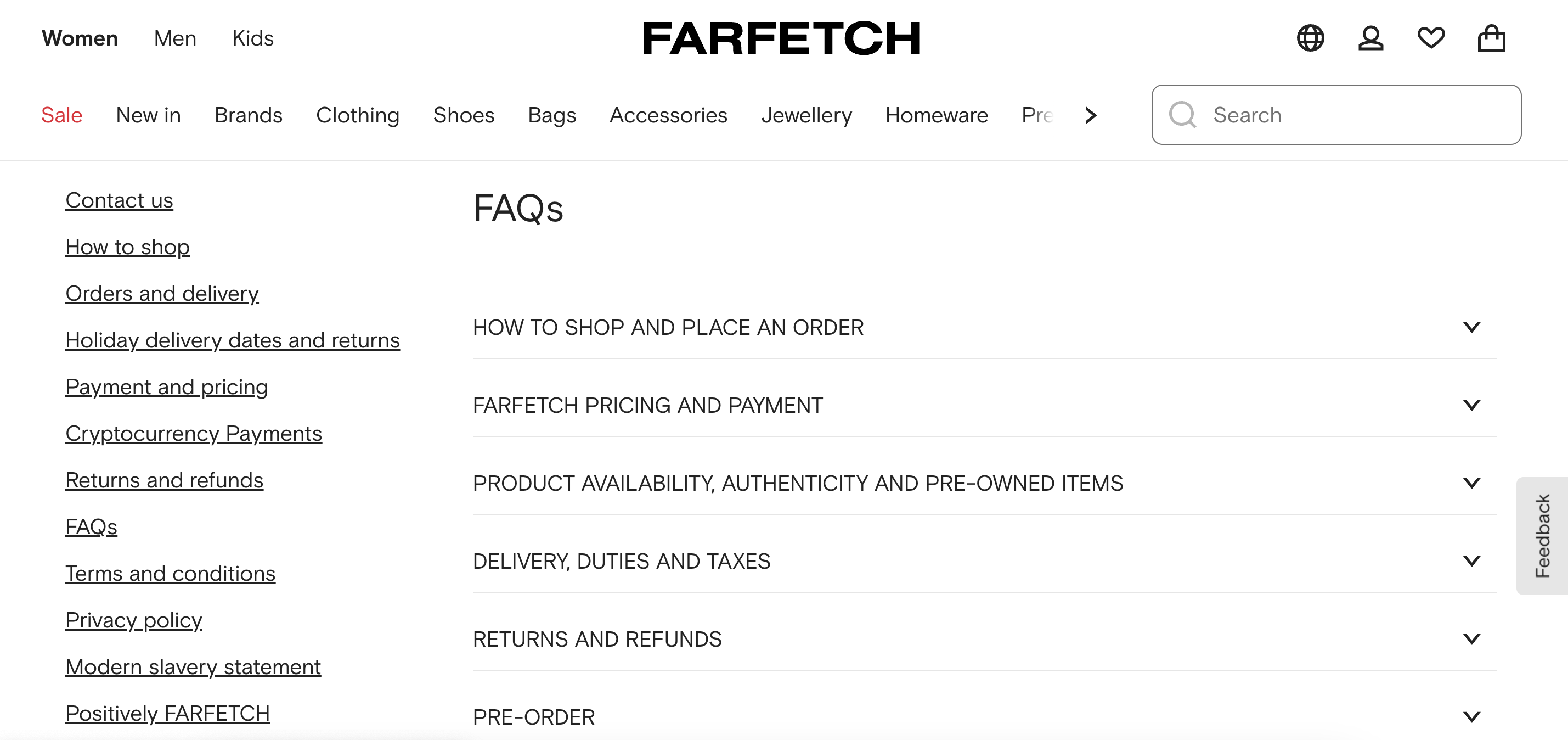
Why does it work?
Intermix’s FAQ page reflects a customer-centric approach, providing immediate access to essential information while enhancing user experience on their site.
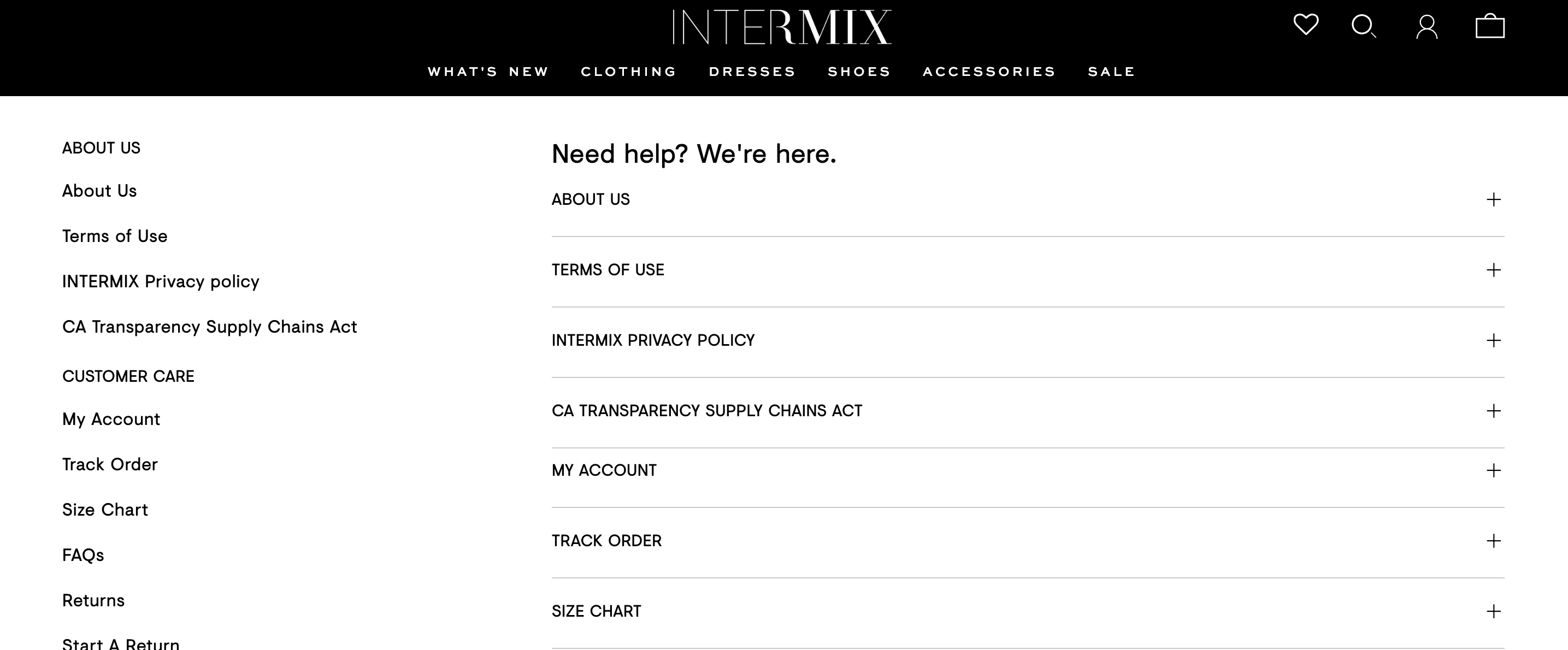
Why does it work?
Jason Wu’s FAQ page exemplifies how simplicity and clear communication can result in an effective resource for customer queries.
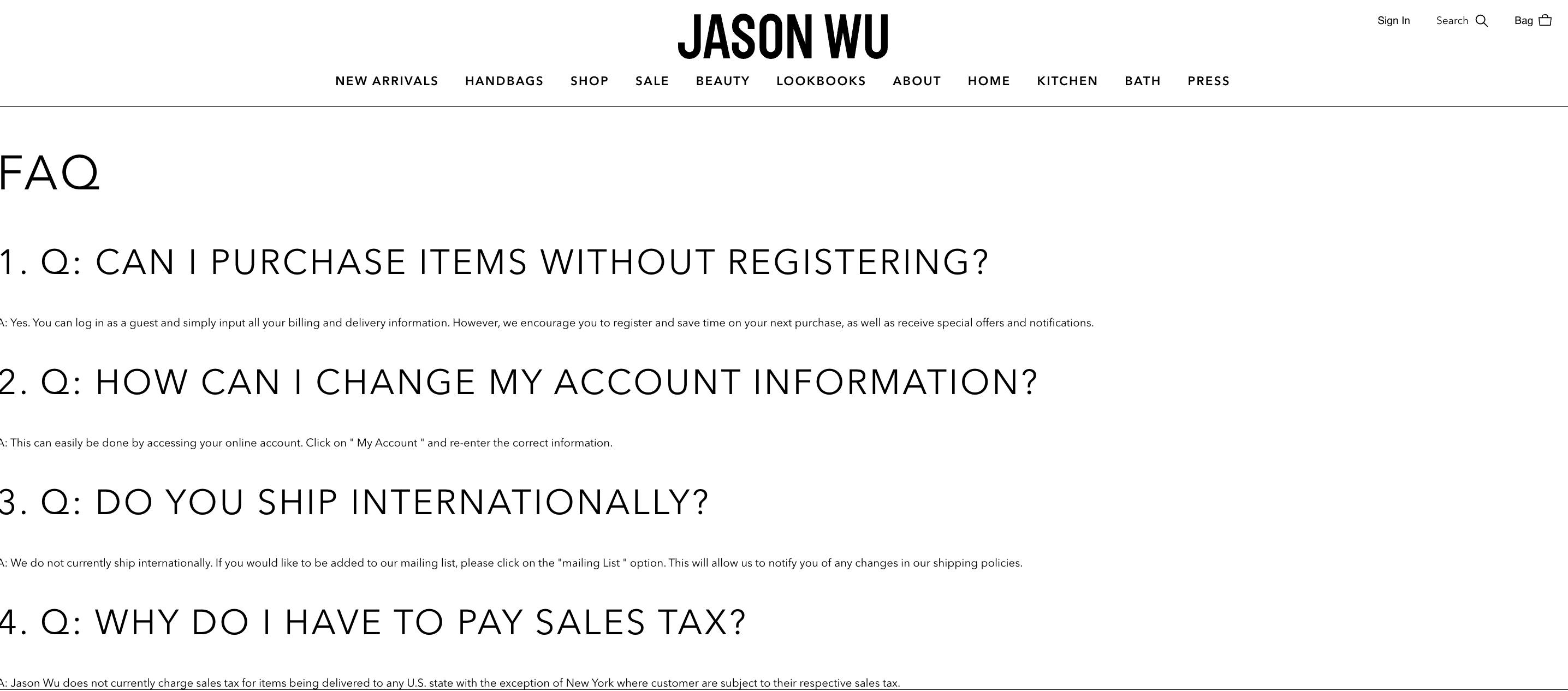
Why does it work?
Through their dedication to educating customers and being transparent about their processes, Fashionphile’s FAQ page goes above and beyond to deliver an exceptional user experience.
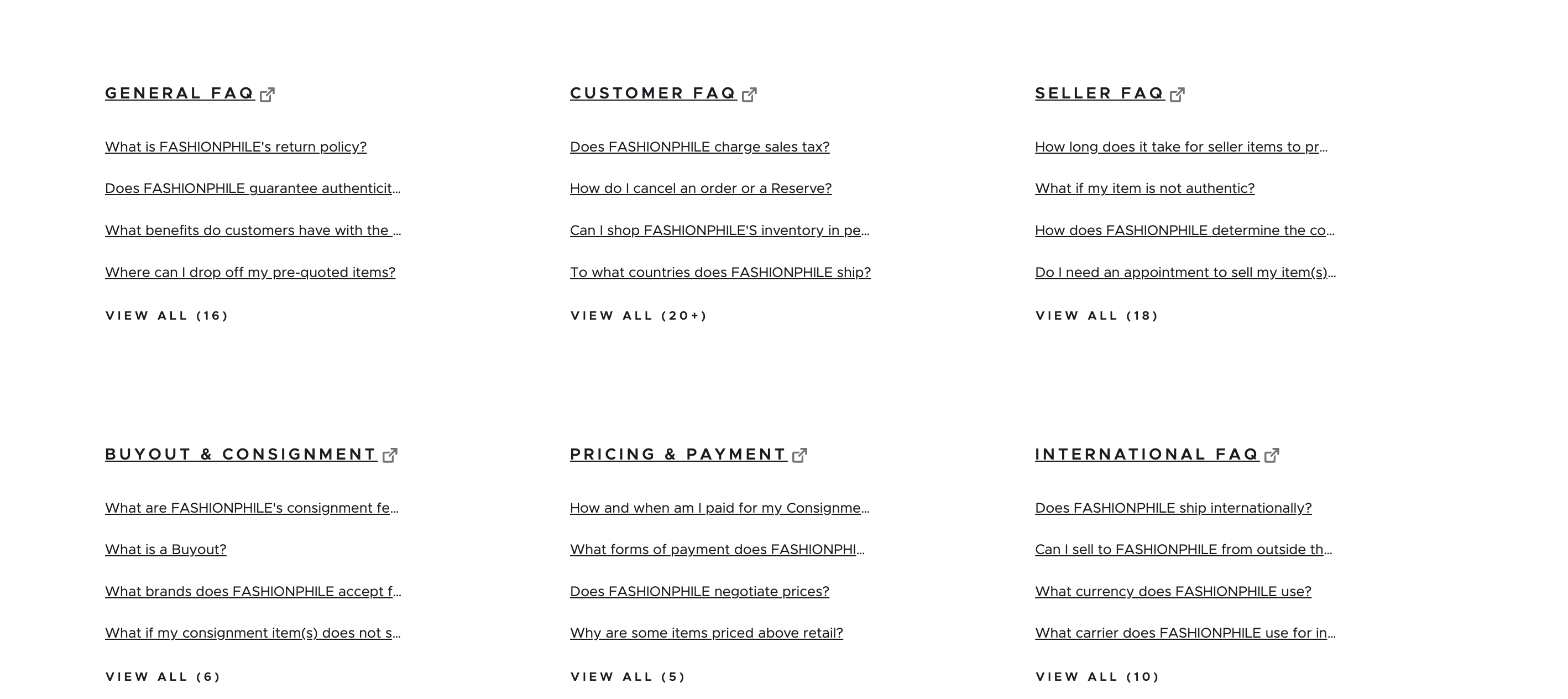
Why does it work?
The Saks Fifth Avenue’s FAQ page is a great FAQ page example of how to create an FAQ section for a dropshipping store that sells luxury fashion brands.
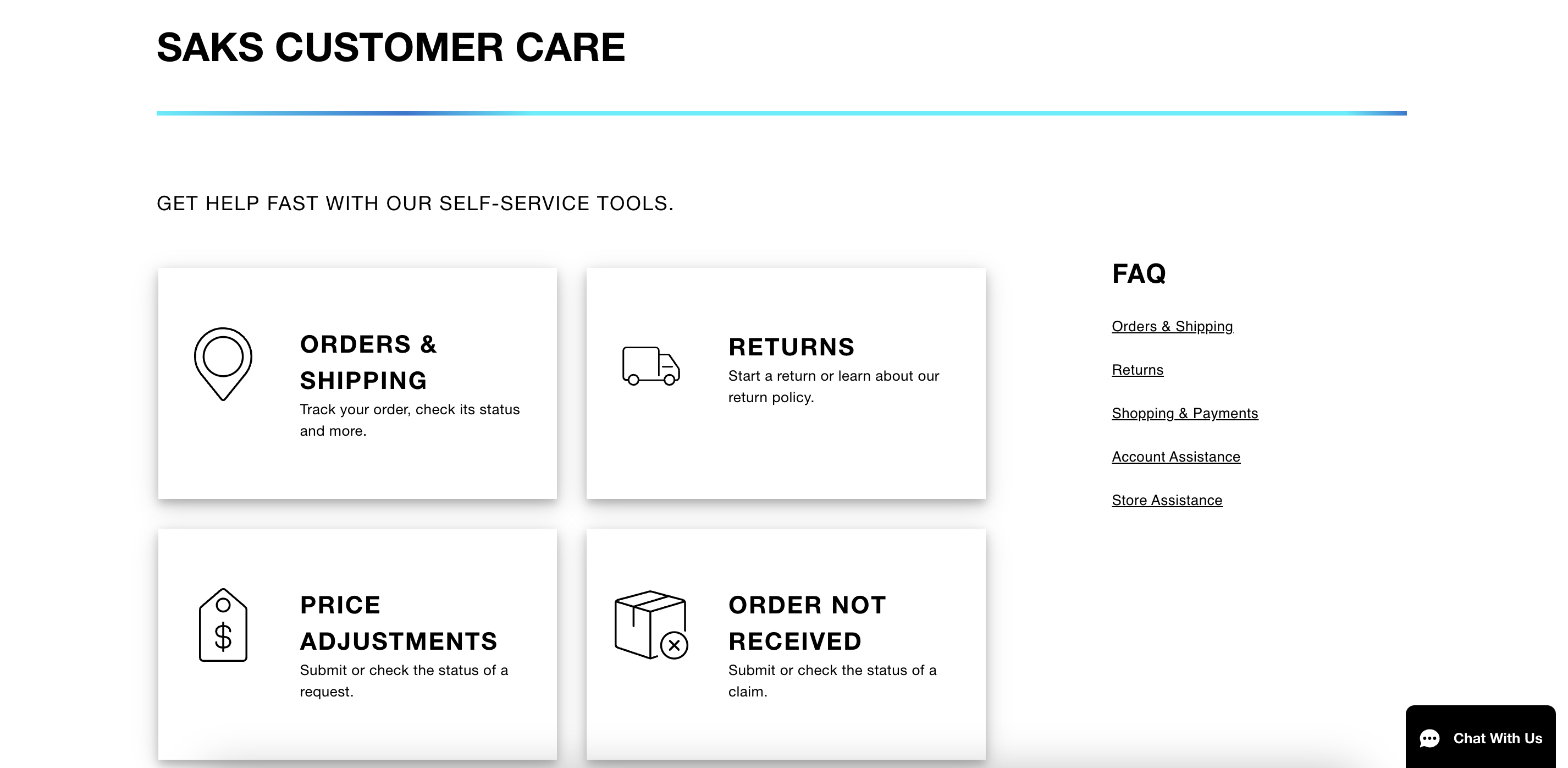
Why does it work?
Check out:
Moda Operandi’s FAQ page upholds its reputation by presenting an elegant and detailed resource for customers.
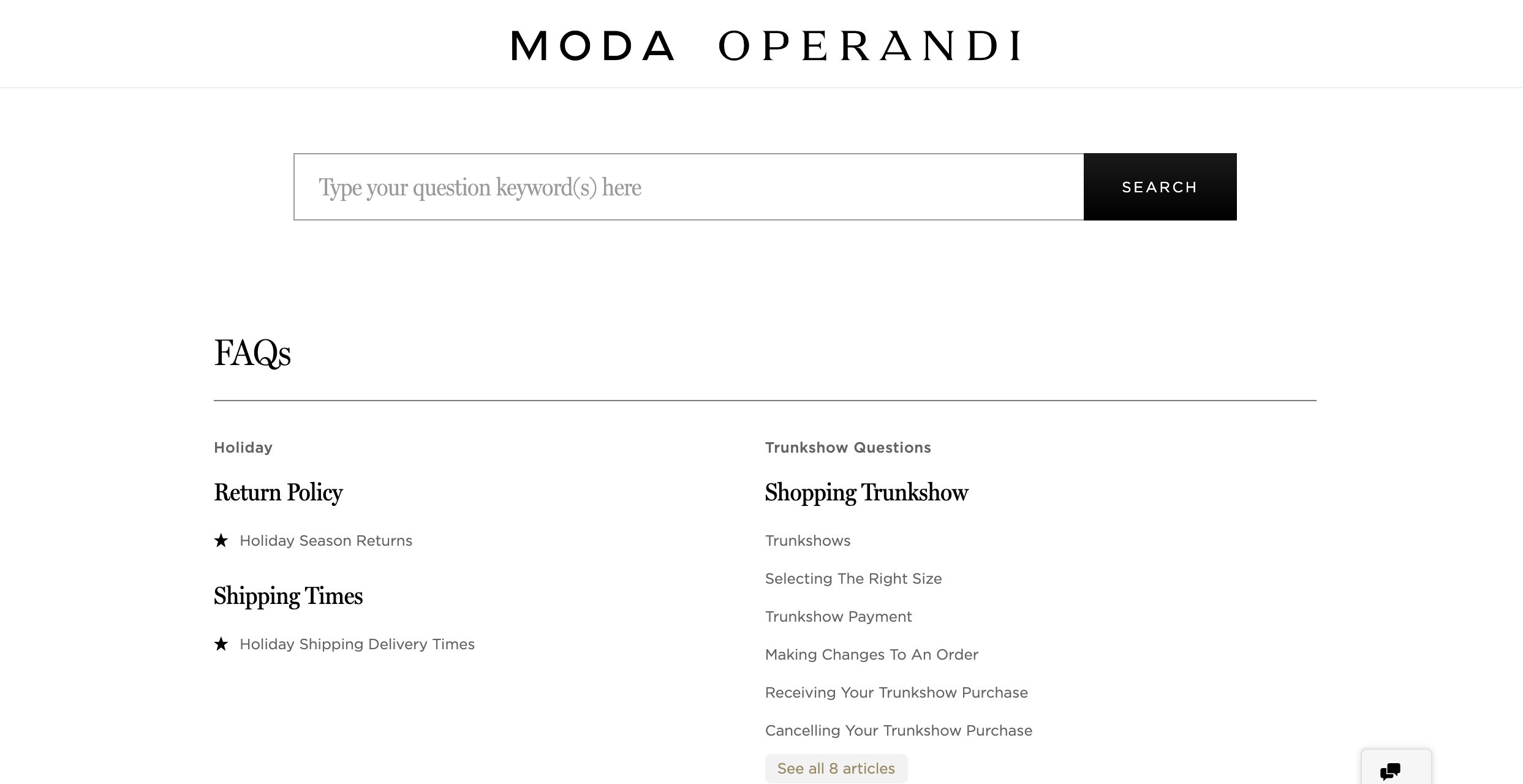
Why does it work?
The key takeaway from Rebag’s FAQ page is its excellent organization and attention to detail, which ensures every customer query is addressed effectively.
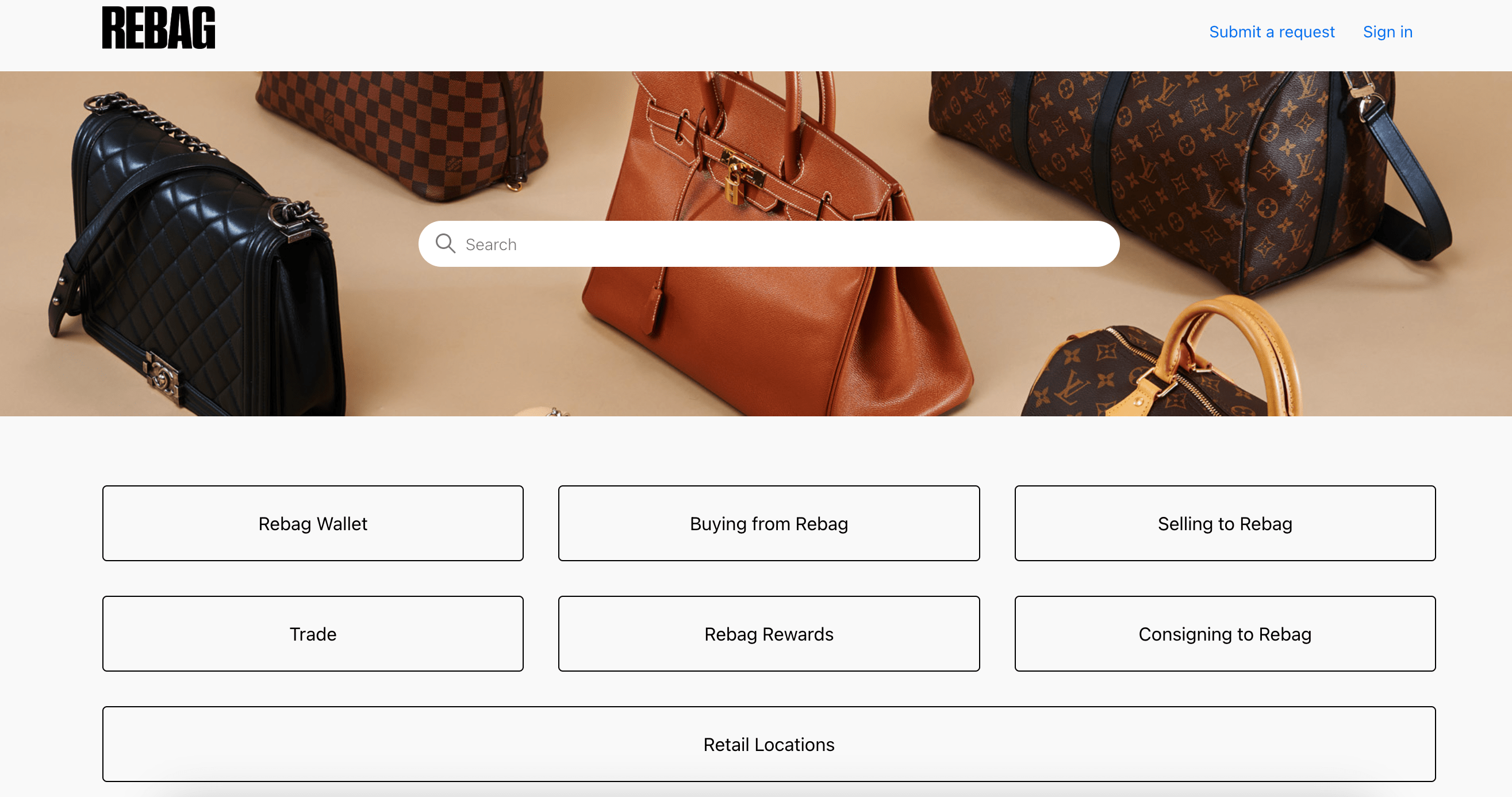
Why does it work?
When you visit the FAQ page of 24S, you’re immediately greeted by a sleek design that guides visitors effortlessly to the information they are looking for.

Why does it work?
Check out: ChatGPT for customer support
By integrating comprehensive information with an intuitive layout and additional features for enhanced user experience, Giglio shows how an FAQ page can be both informative and reflective of a brand’s image.
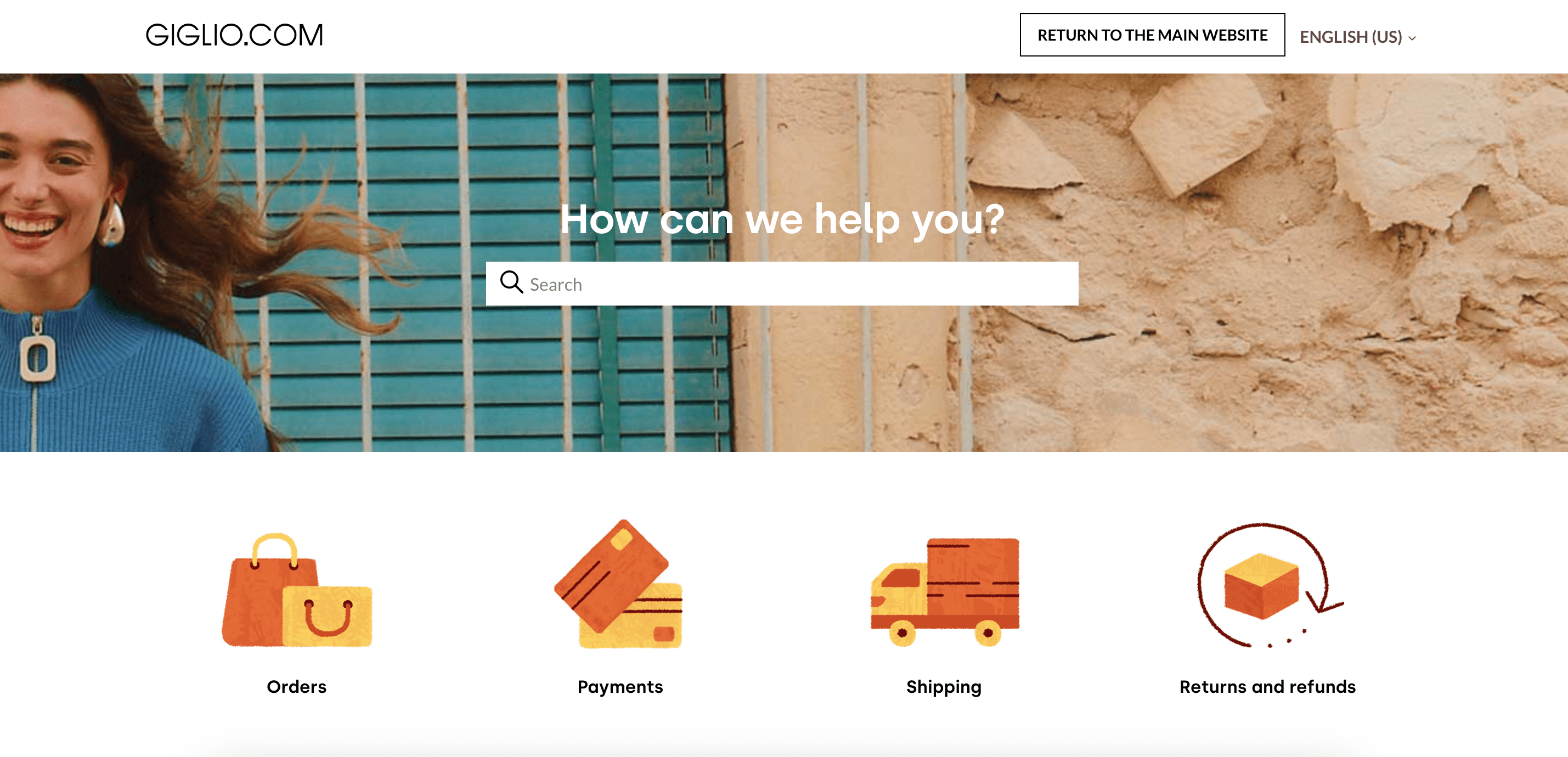
Why does it work?
Another FAQ page example can be seen on Tootsies’s website, standing out with its elegant design and focus on customer needs.
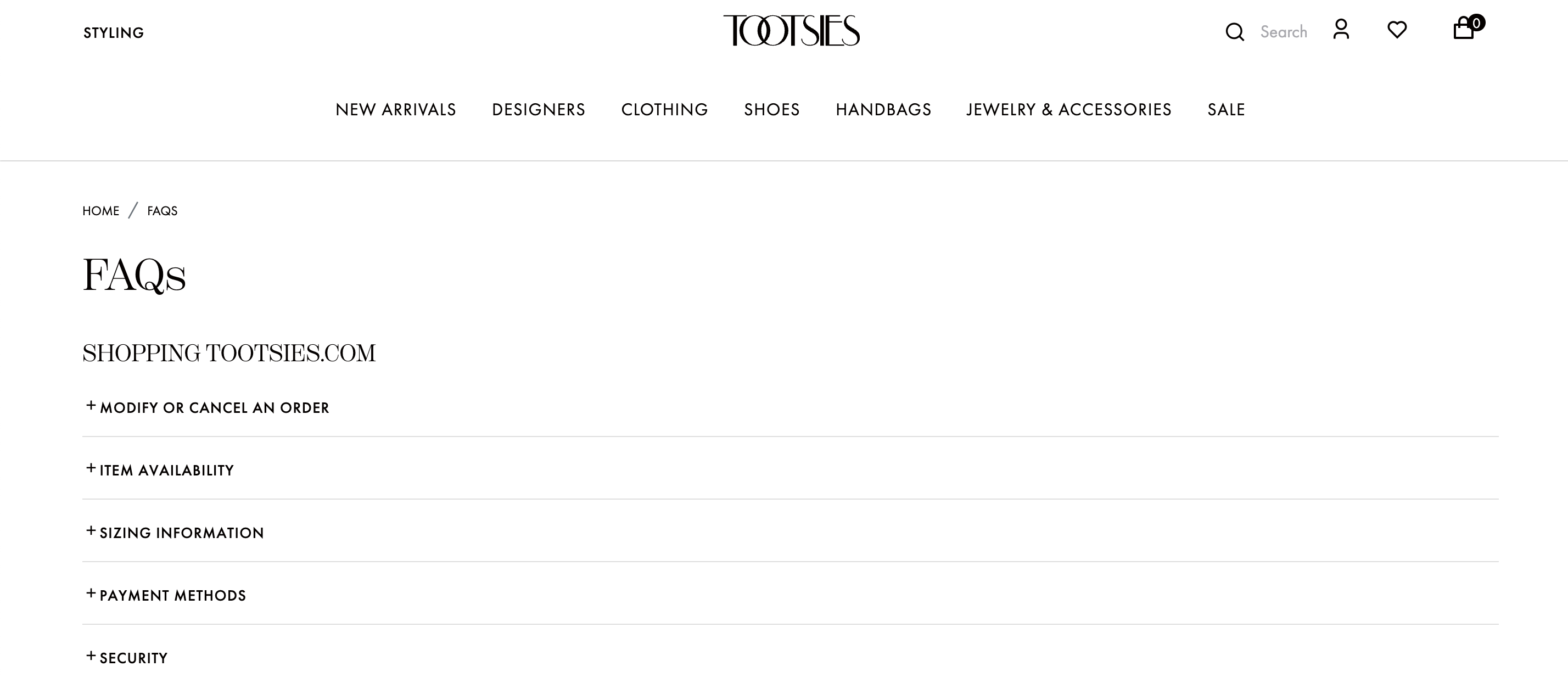
Why does it work?
The What Goes Around Comes Around FAQ page effectively builds trust while providing an excellent user experience, serving as a significant asset in their customer service strategy.
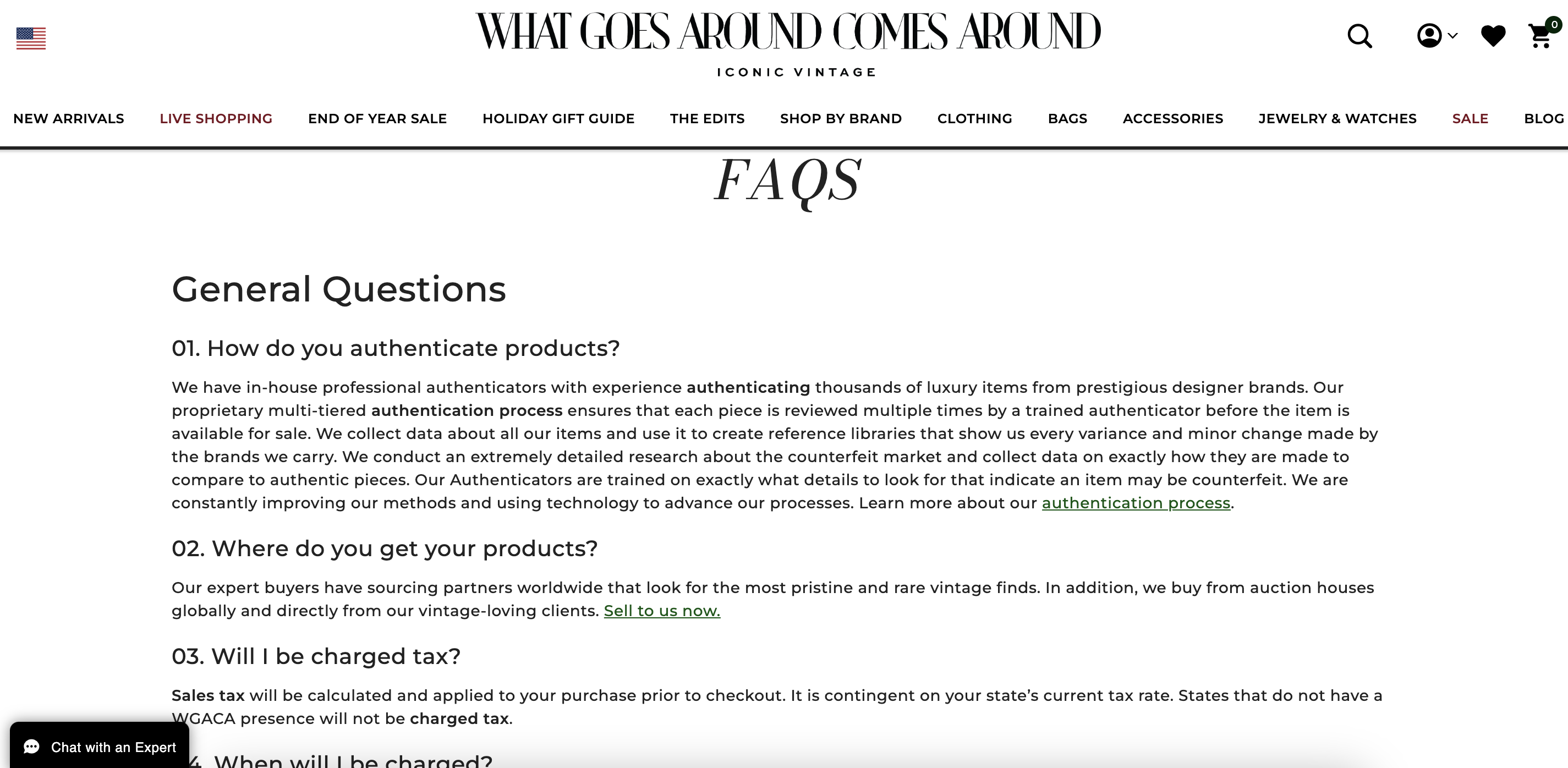
Why does it work?
Crafting an FAQ page that answers the most common questions your customers are asking is a key step in building up your dropshipping clothing business as a trusted business.
By taking inspiration from the FAQ page examples provided, you can design an FAQ page that not only serves as an information hub but also enhances your customers’ shopping experiences.
Remember, an effective FAQ page should be easy to navigate around, has a user-friendly design, and addresses common concerns by providing simple answers.
Don’t forget to keep on updating your FAQ page by regularly engaging with your customers and staying informed about the latest questions they need an answers to.
An FAQ (Frequently Asked Questions) page should contain a comprehensive list of questions and answers that address common customer inquiries and concerns.
For a dropshipping clothing store, these might include:
FAQ answers should be simple and short, typically ranging from a few sentences to a short paragraph. The goal is to provide clear, straightforward answers that resolve the customer’s query without overwhelming them with information. Ideally, each answer should be around 50-150 words, depending on the complexity of the question.
While traditionally FAQs are formatted as questions and answers, they don’t always have to be strictly phrased as questions. The focus should be on addressing common customer concerns and topics.
What is dropshipping?